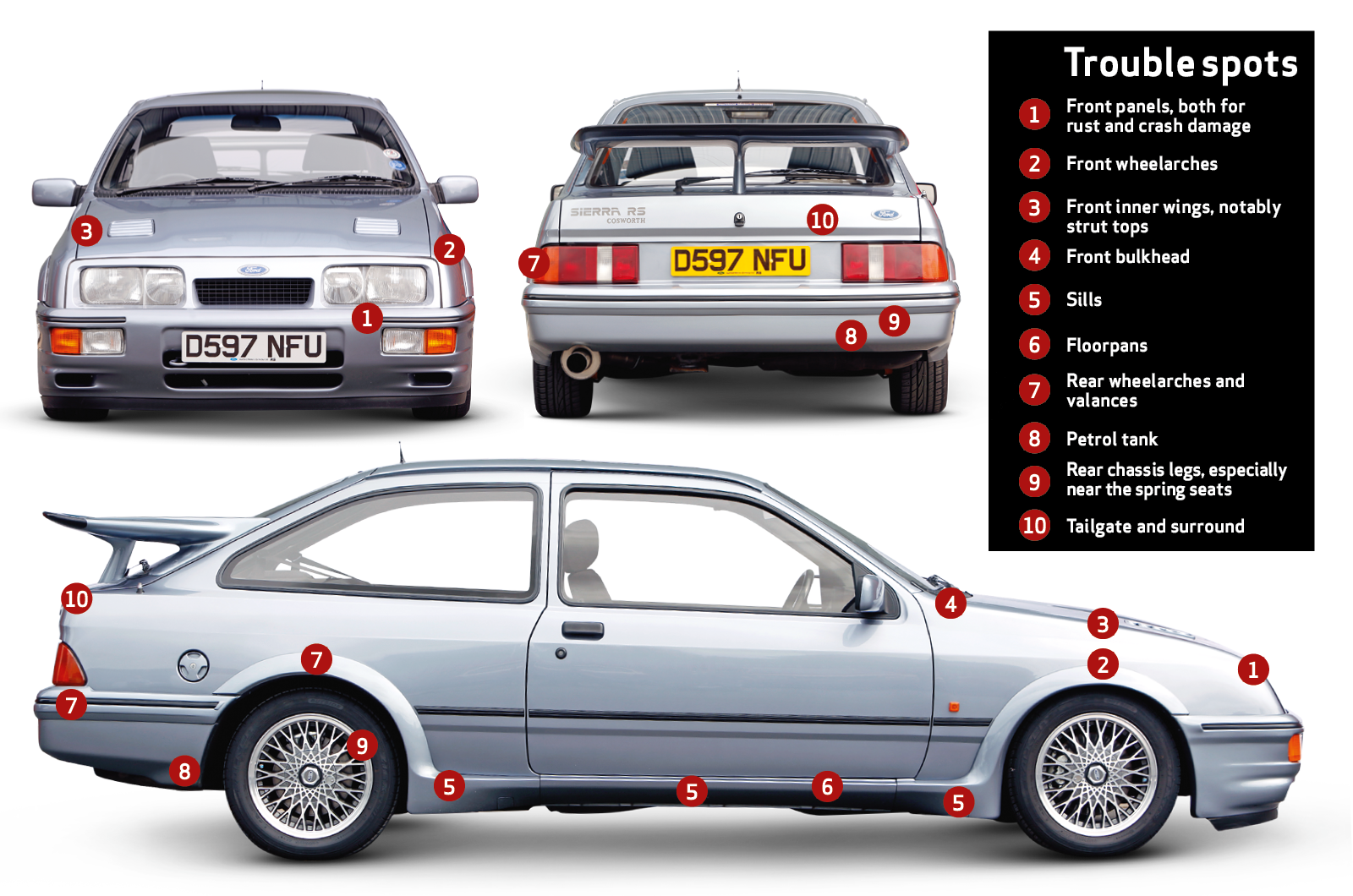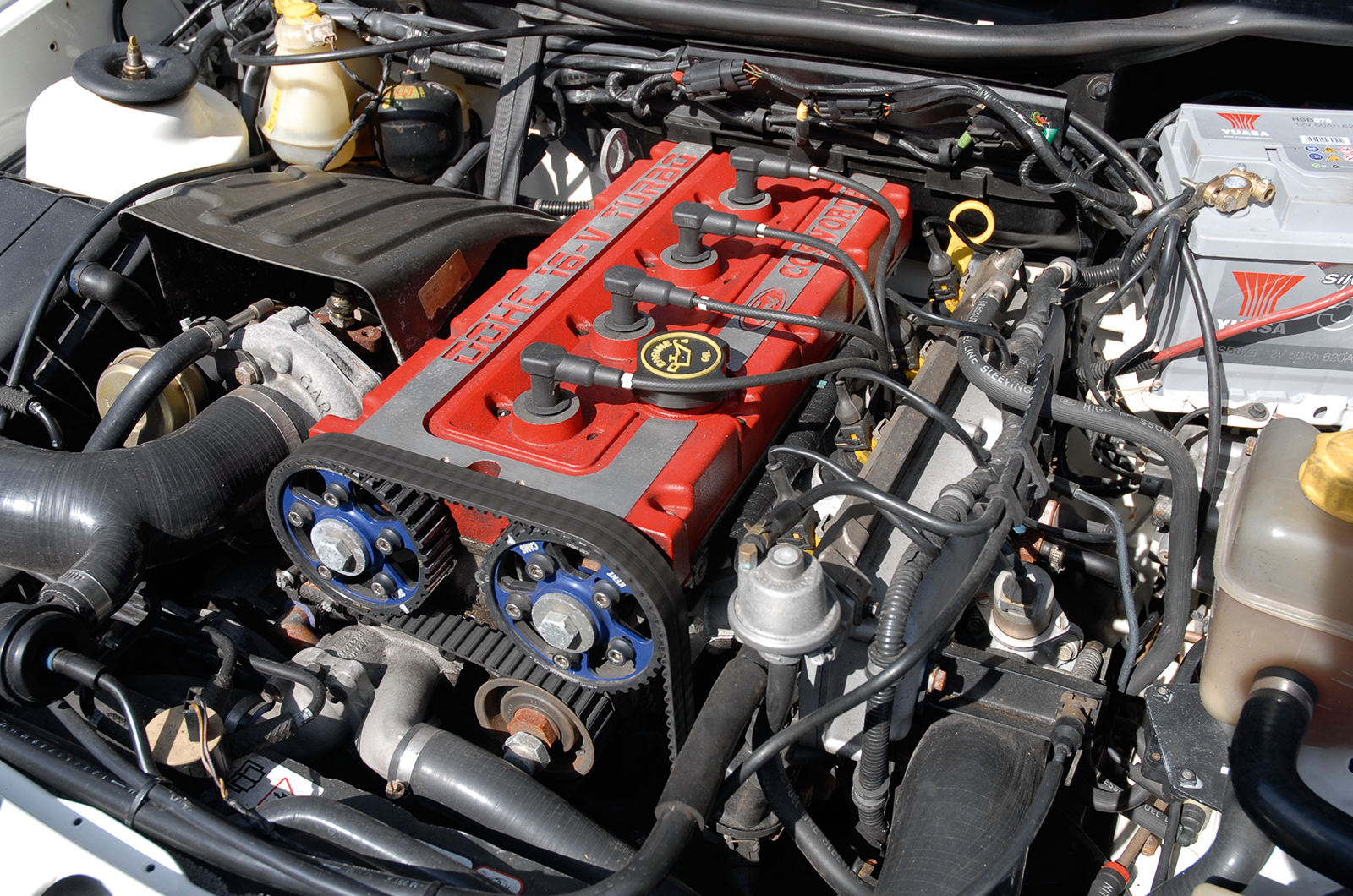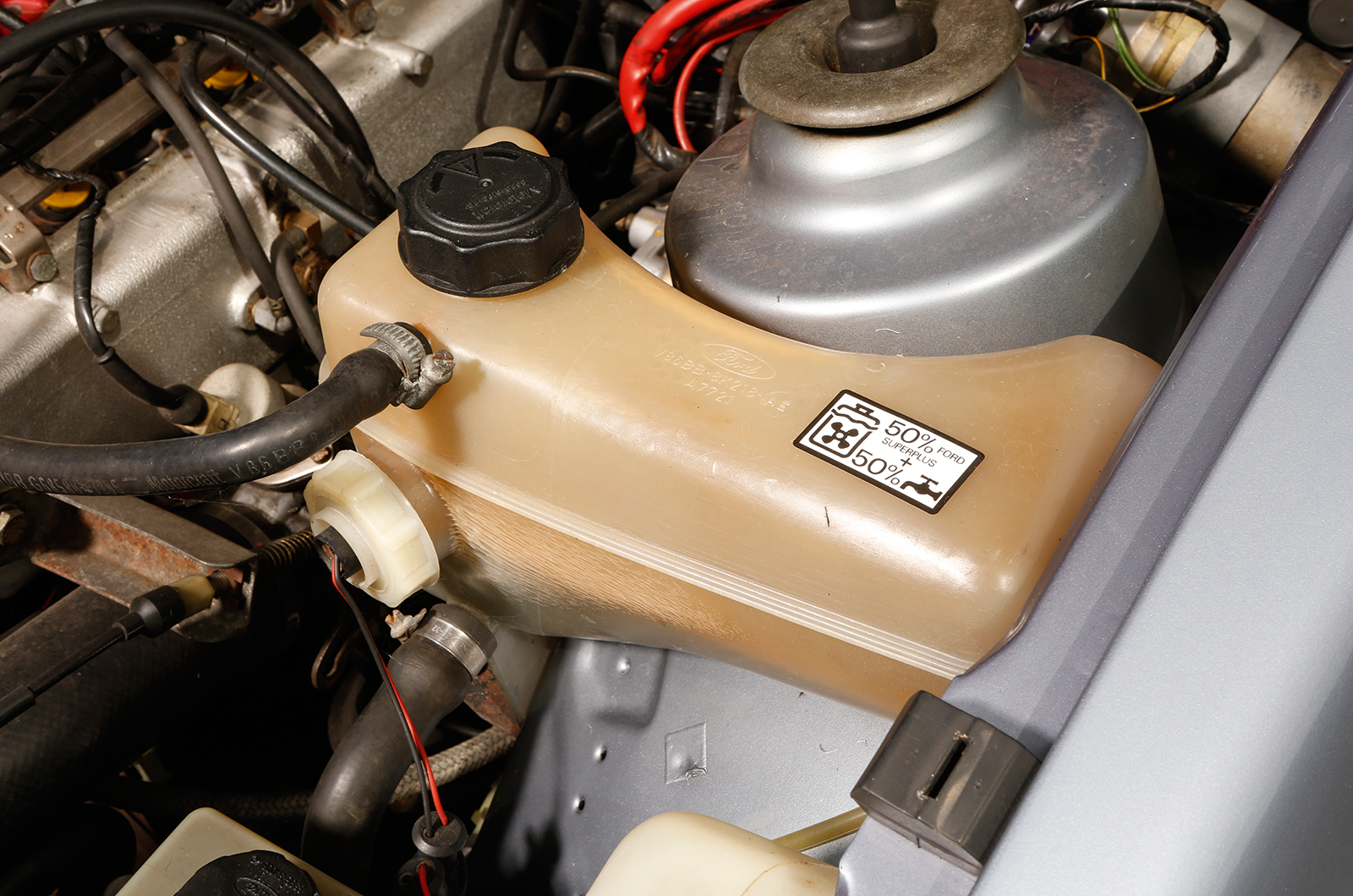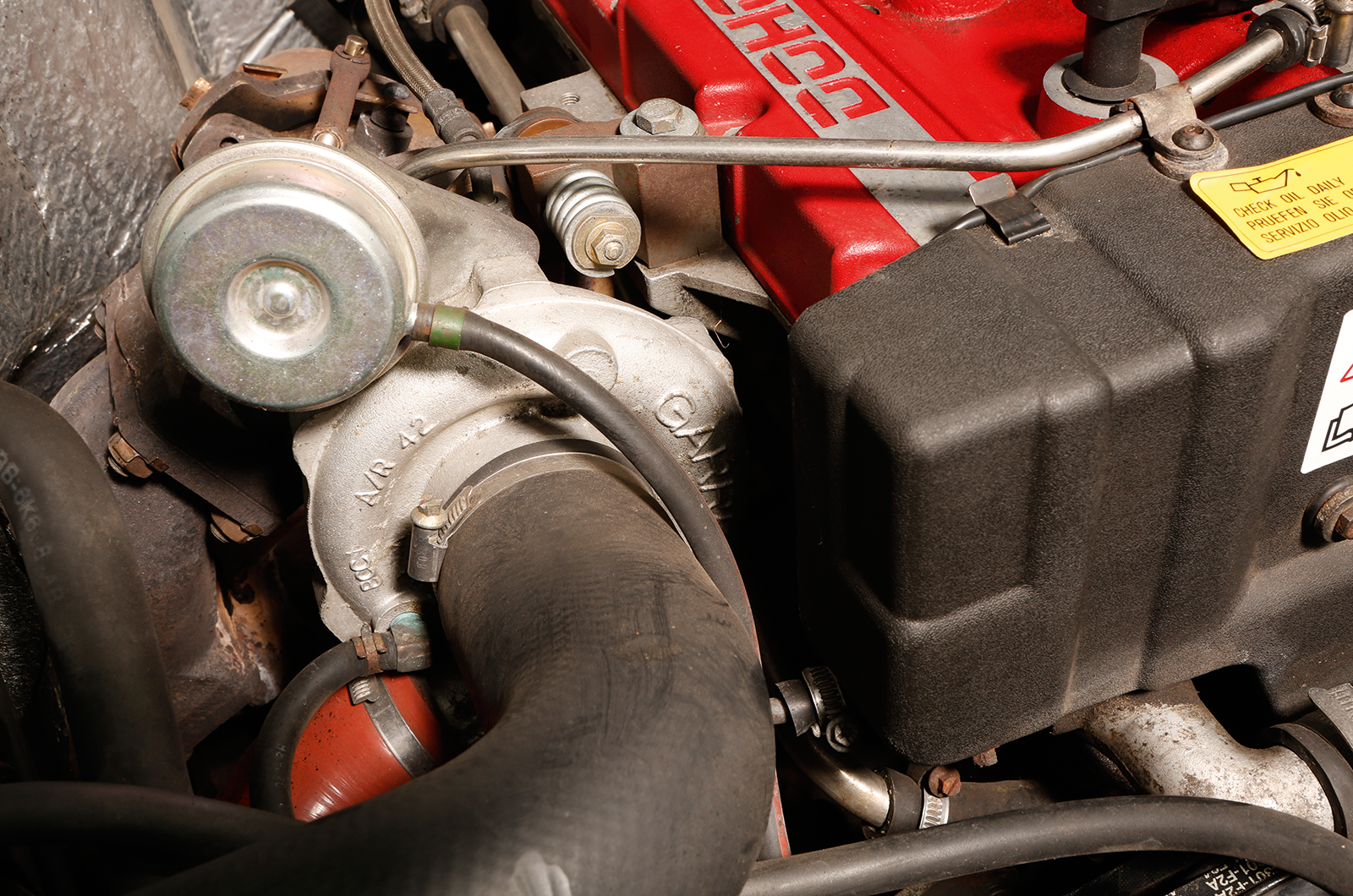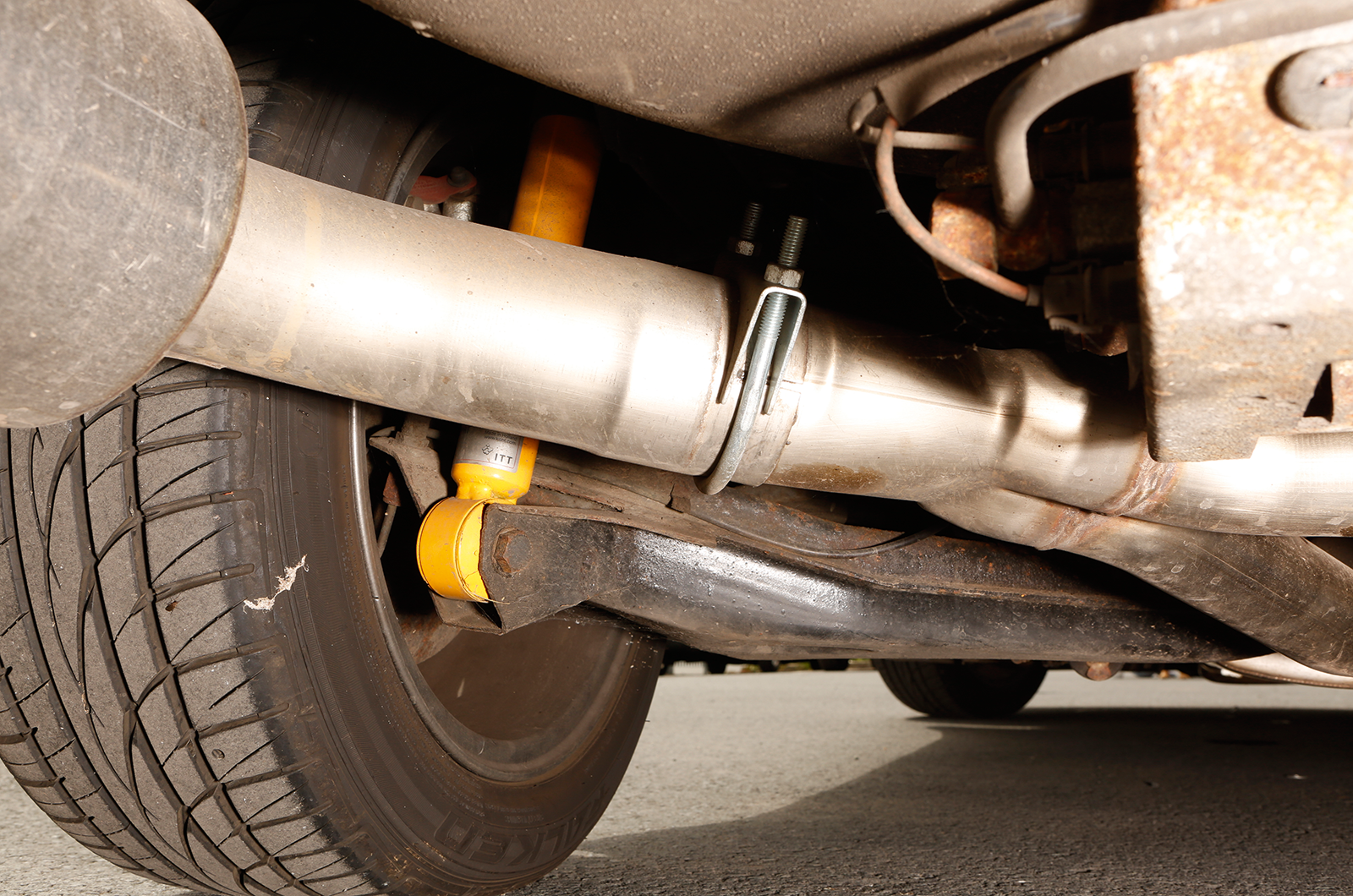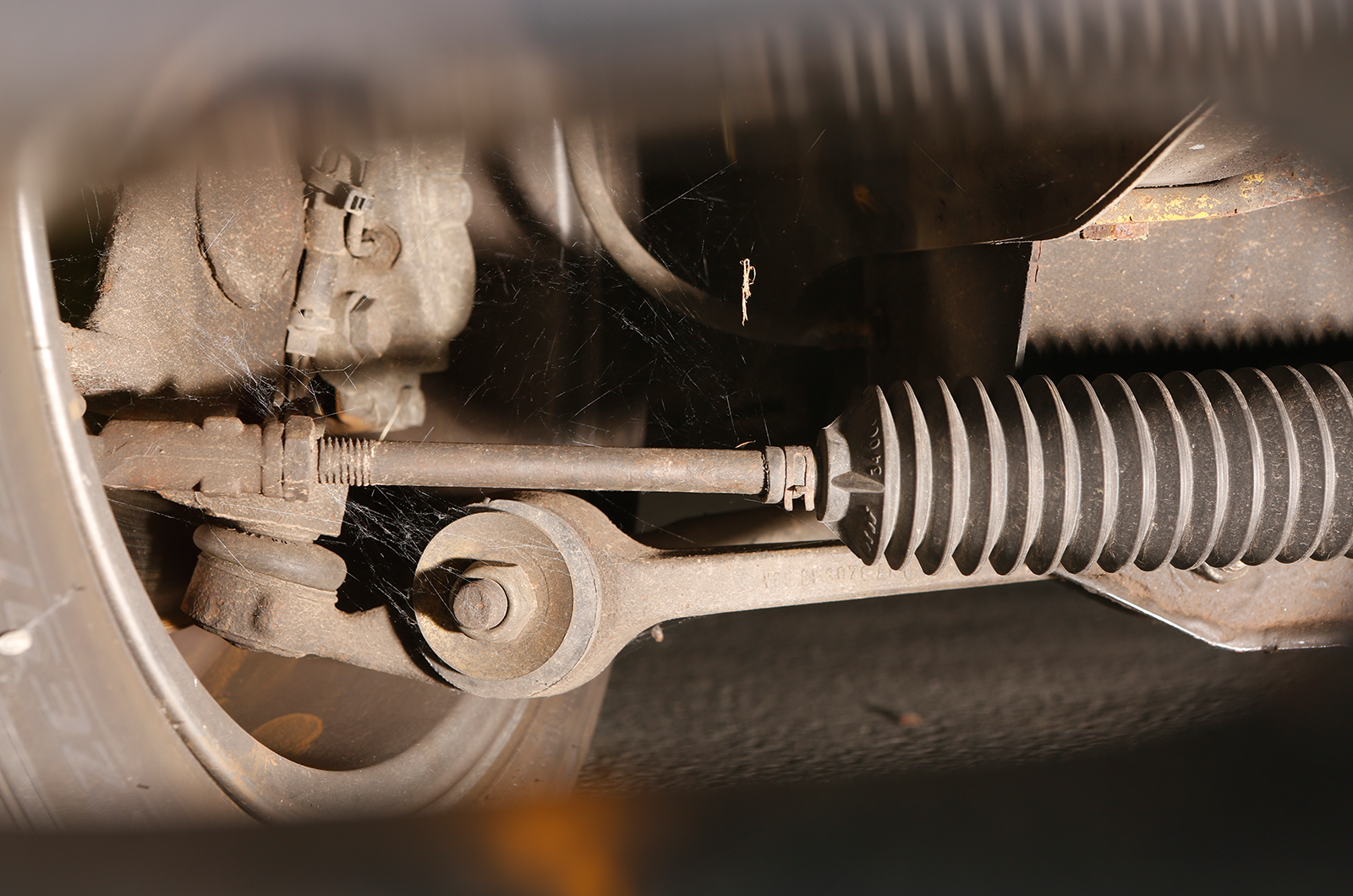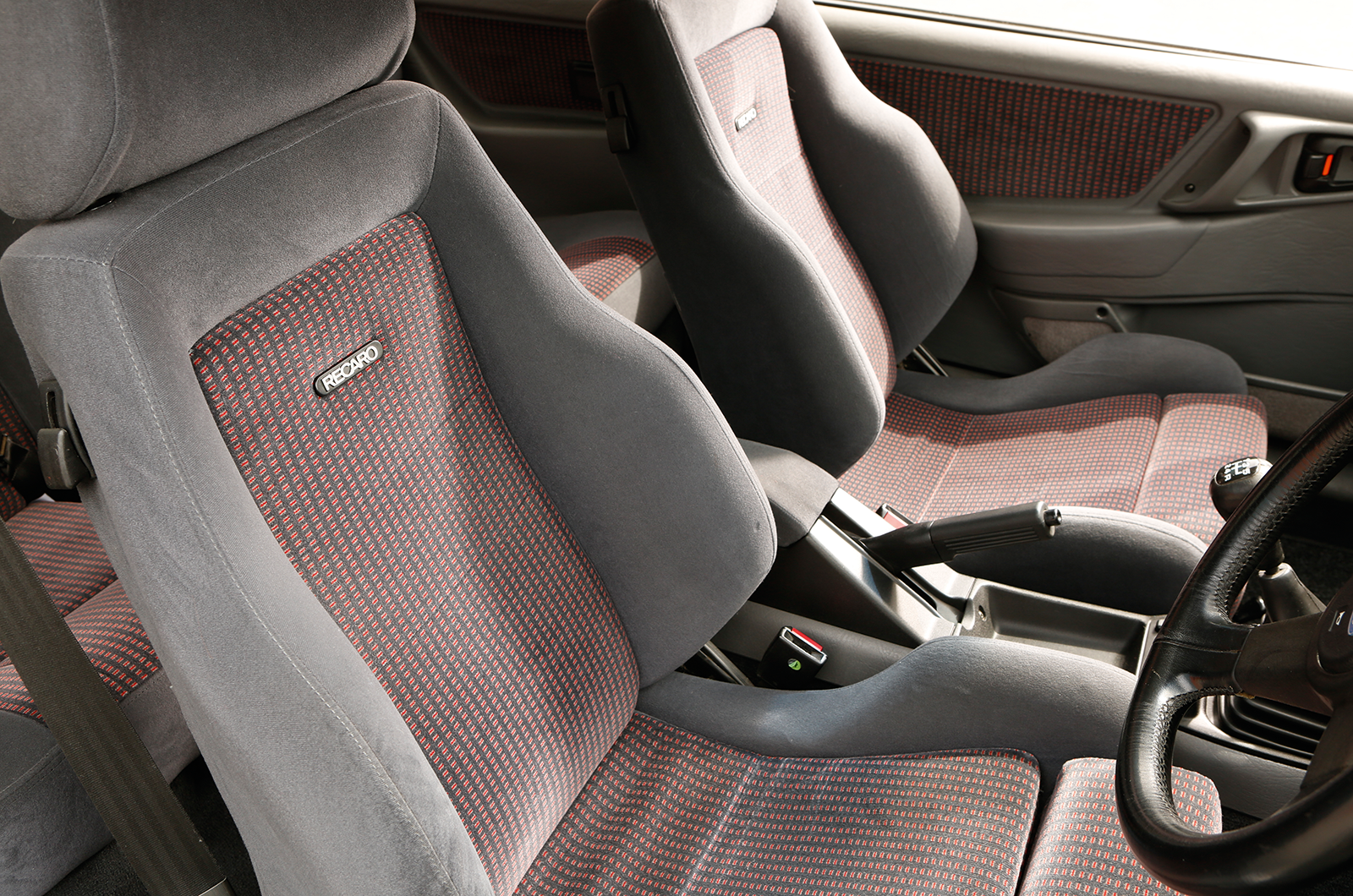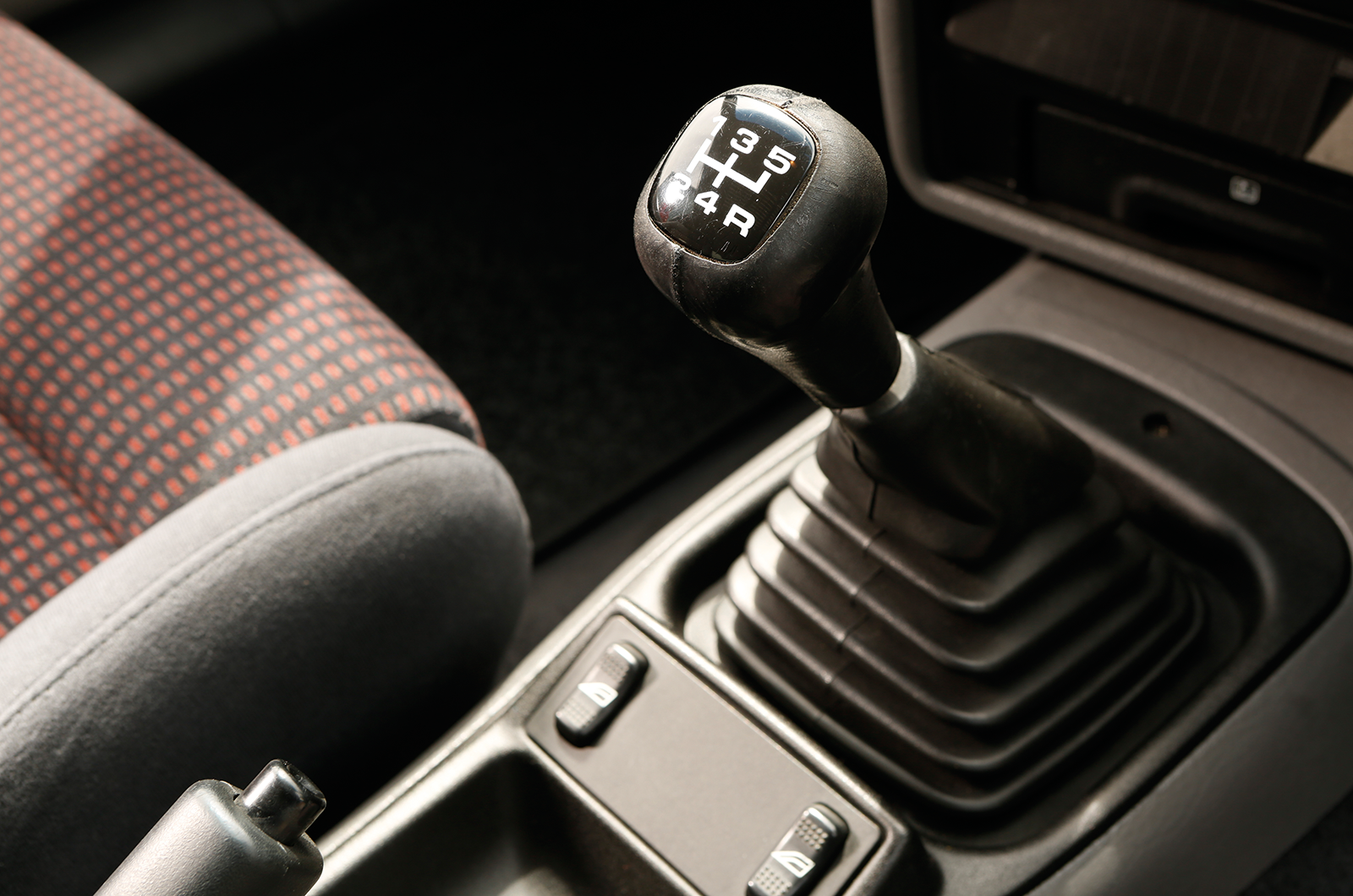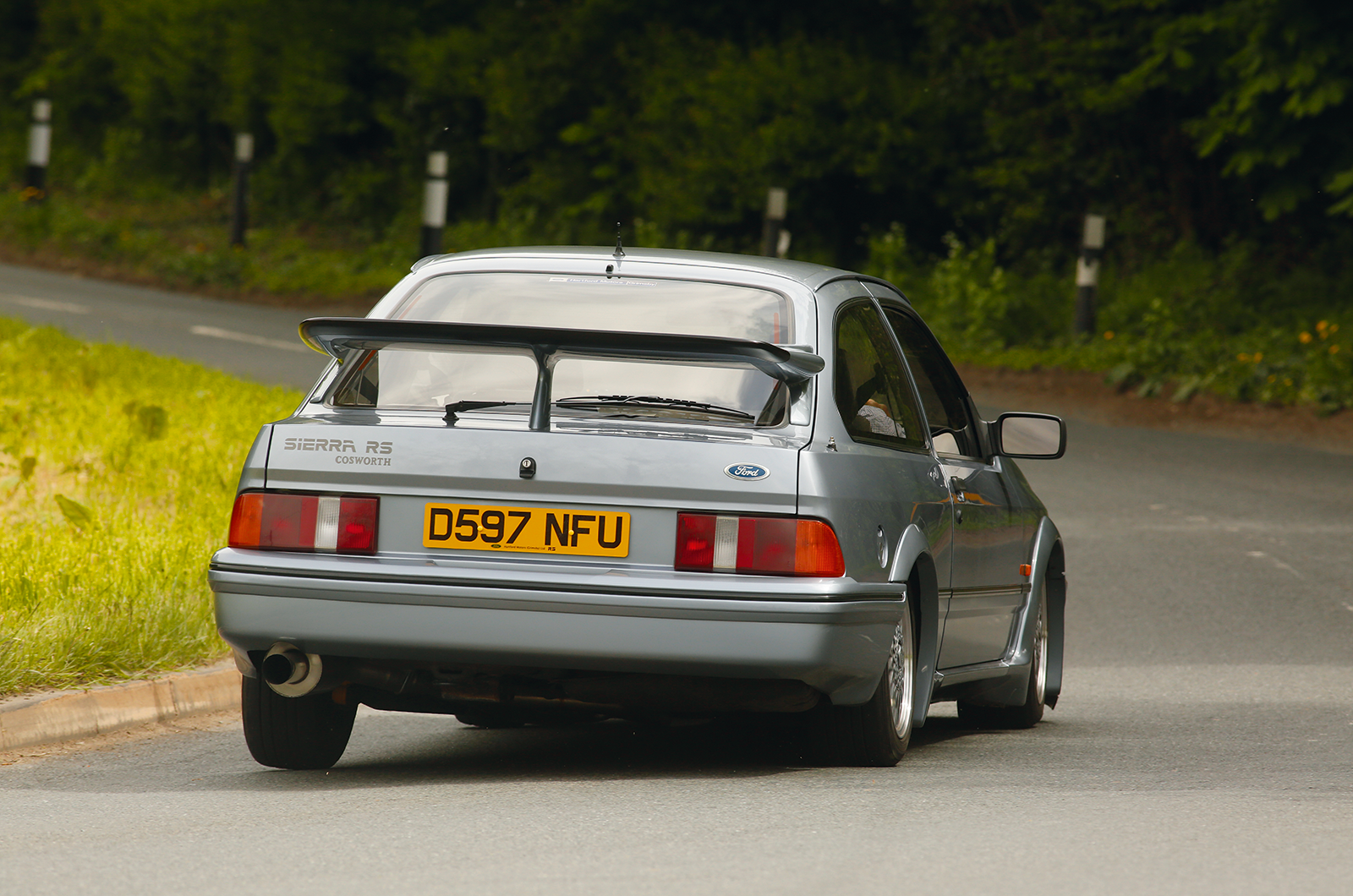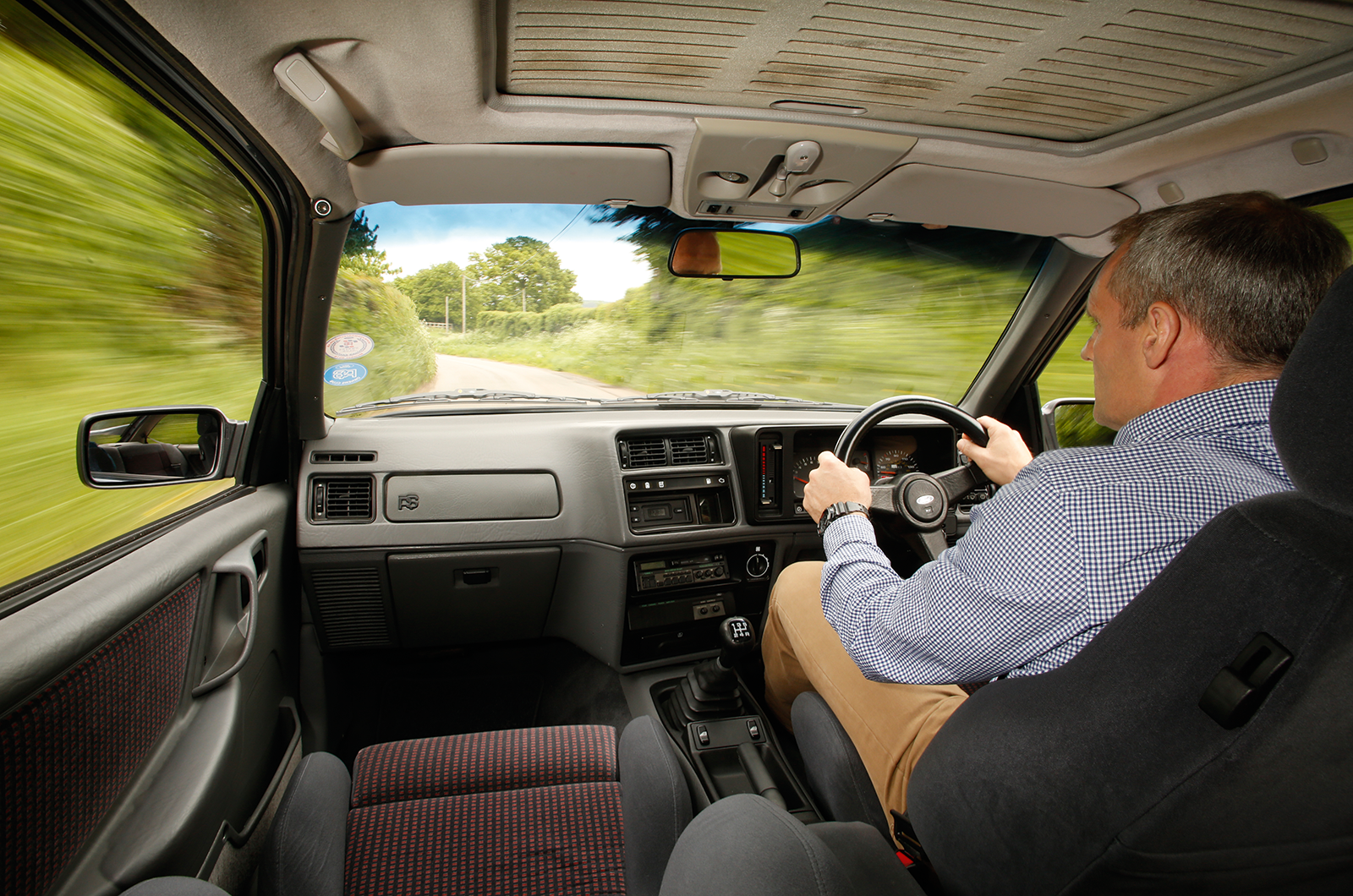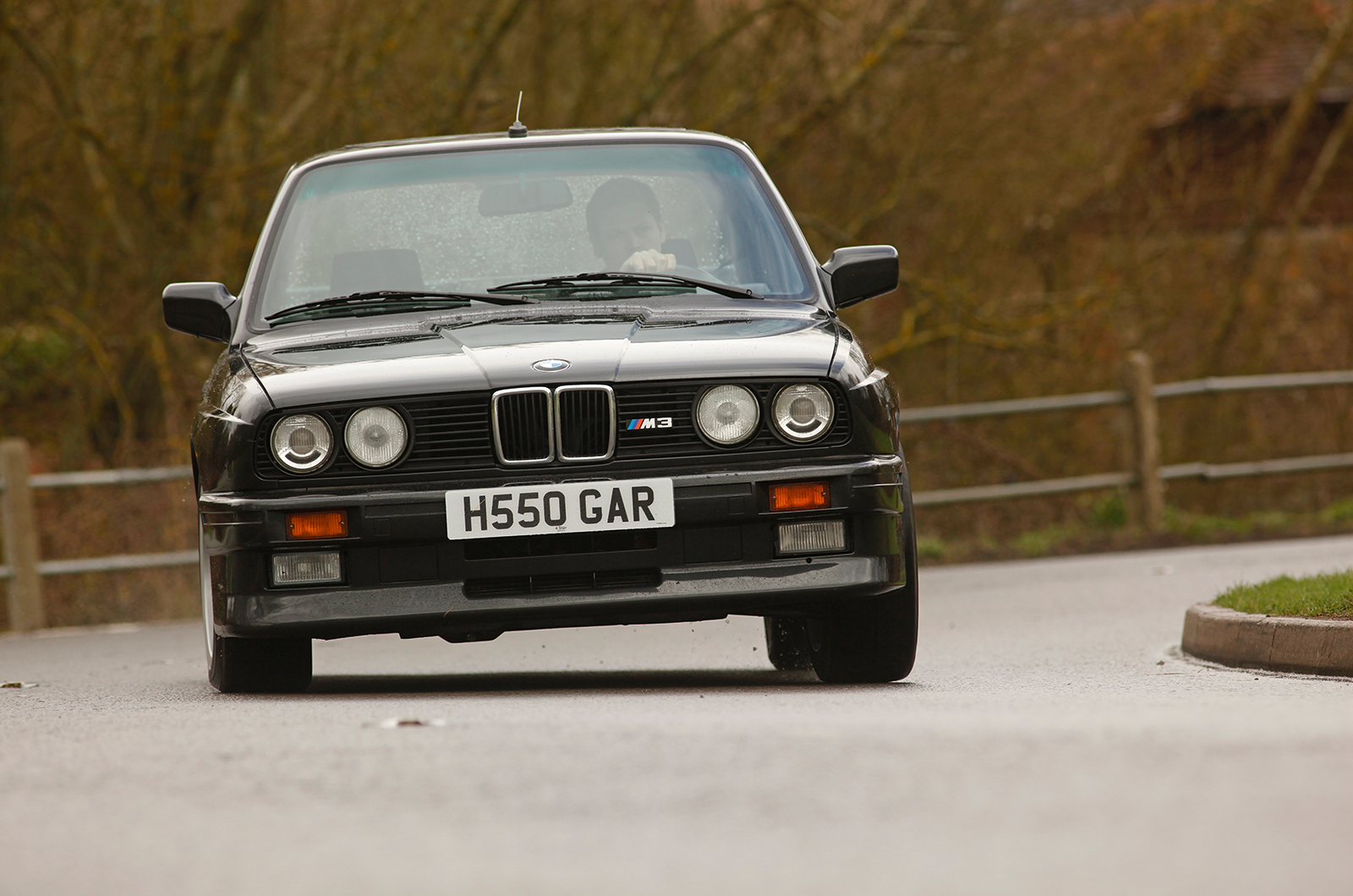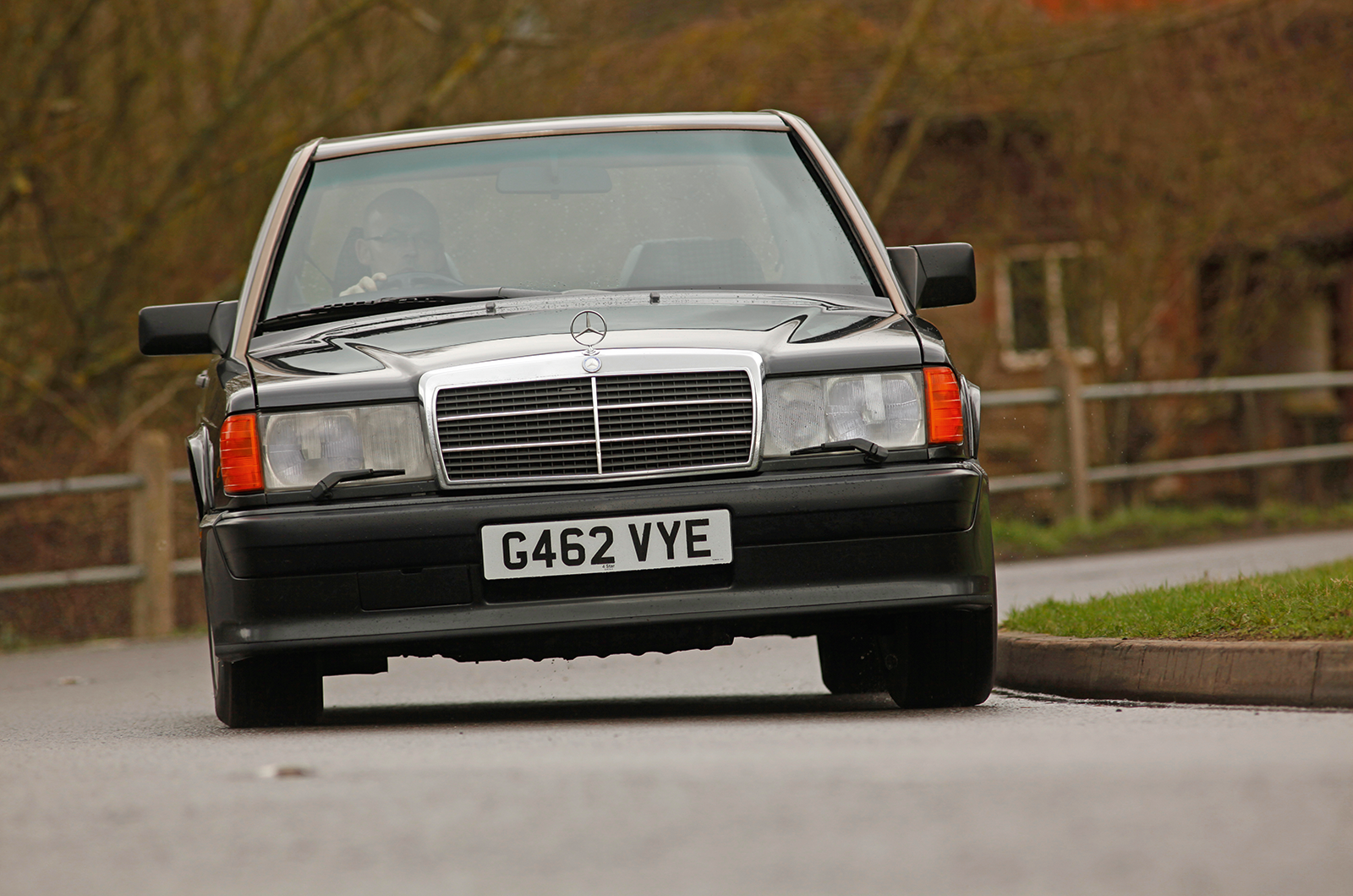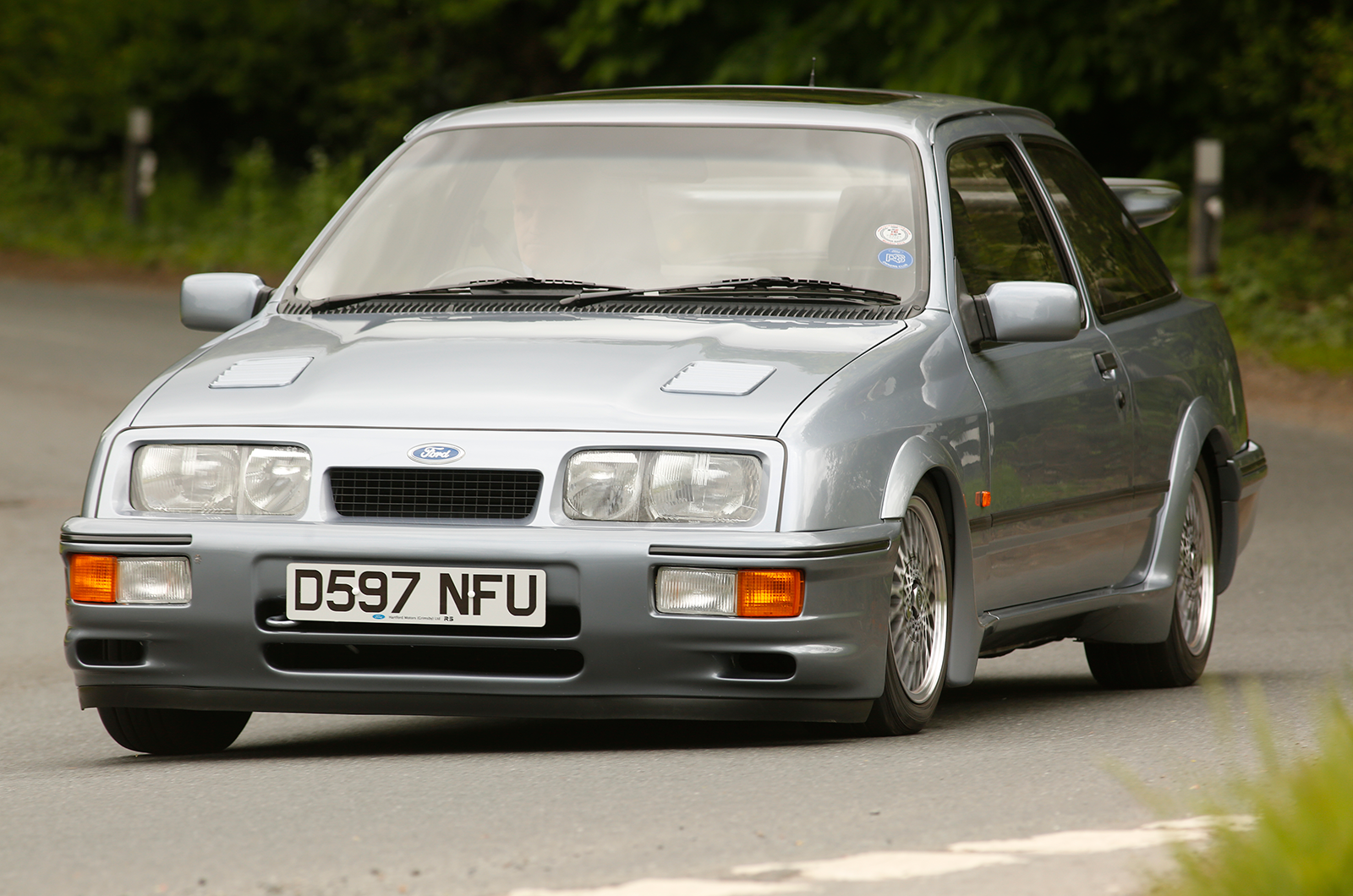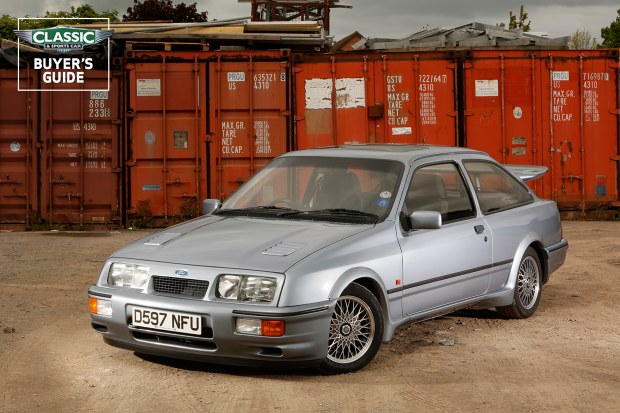
Why you’d want a Ford Sierra RS Cosworth
The RS Cosworth gave the Sierra range proper ‘street cred’. Ford Motorsport under Stuart Turner needed a Group A saloon to replace the Capri. Conveniently, Cosworth had developed a 16-valve twin-cam version of the Pinto engine that, once turbocharged, would create a stonking Touring Car in the light three-door fleet Sierra bodyshell.
Aerodynamic work yielded effective spoilers; a nose intake fed air to the intercooler. Four-wheel disc brakes with ABS and 7x15in alloys were specified, but the RS tag was used only in the UK.
Initial sales network reaction was poor, so Ford massaged the price and spec, restricting the model to one trim colour and three external: Diamond White, Black or Moonstone Blue.
Having built enough cars to homologate for Motorsport by the end of ’86, including 500 shells set aside to be the evolution RS500, Ford’s next Cosworth would be a more civilised road car, not a competition special. The new four-door Sapphire saloon shell proved no heavier than the old three-door, but more aerodynamic.
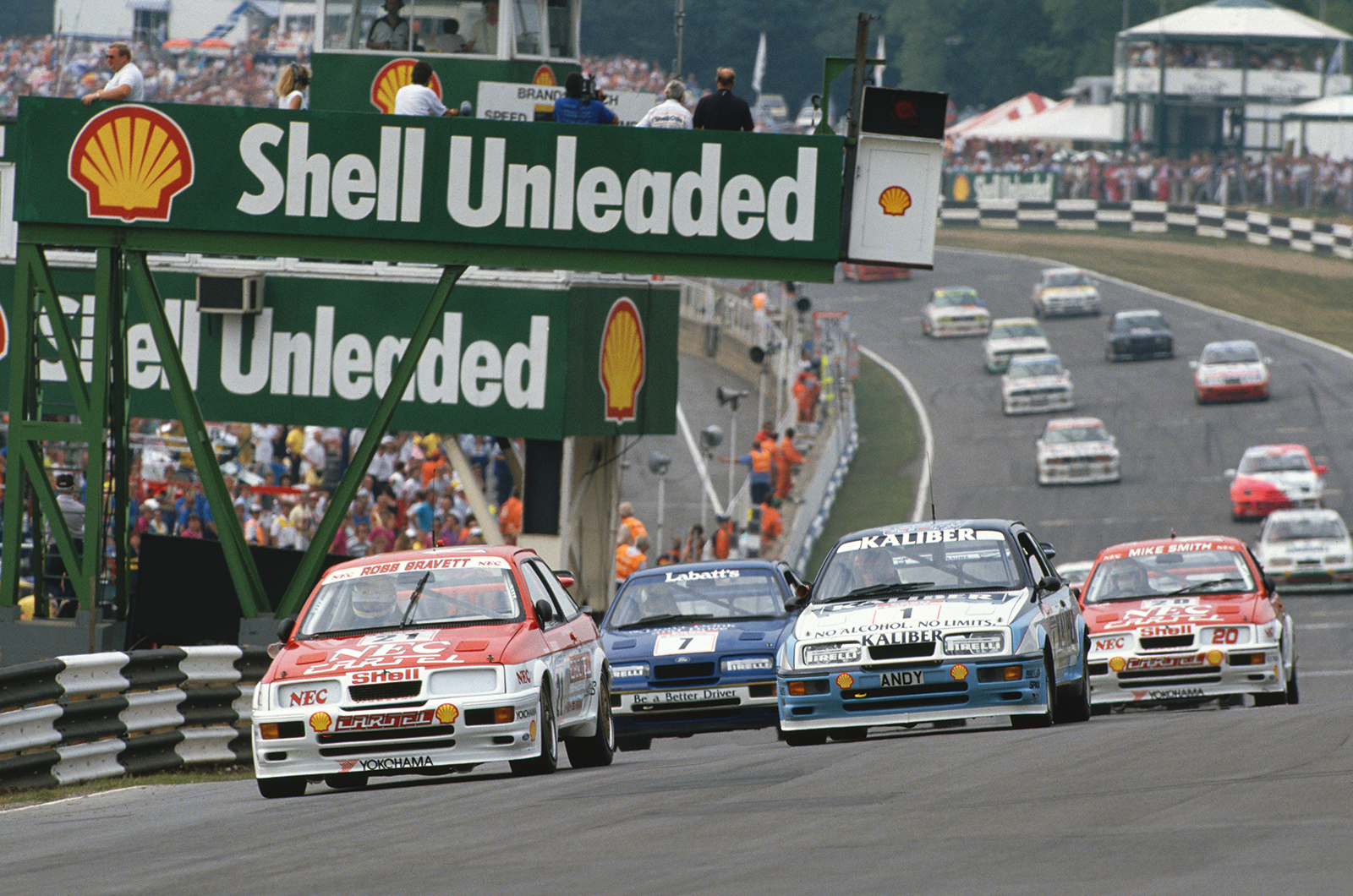
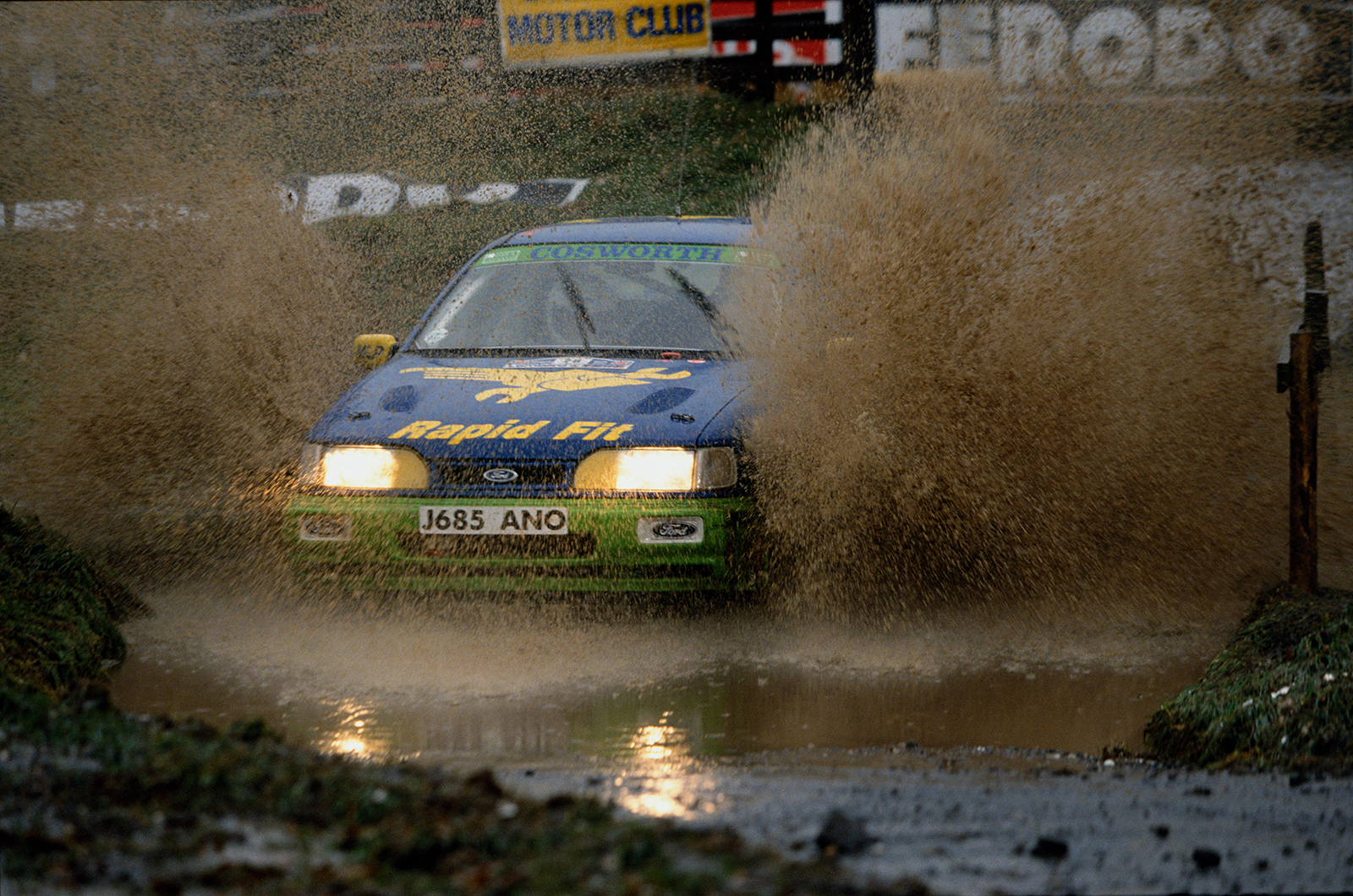
The RS500, modified from standard three-door Cosworths by Aston Martin Tickford, was the most successful on track and is now the most desirable, but was barely any quicker as a road car. All were right-hand drive, intended for the UK, and almost all were black. The engine featured a stiffer block, larger turbo and intercooler, twin-rail injection and modified inlets.

